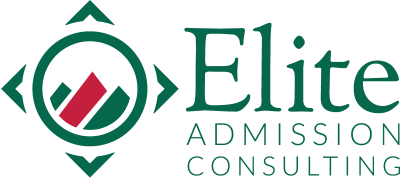By Grey Joyner
Admission Consultant, Elite Admission
While many aspiring US college students are still eagerly awaiting admissions decisions, some trends are beginning to emerge about the current state of the US college application landscape. Common App has released their regular research report “Deadline Updates”, which details findings about US college applications through 1 February (including most selective university regular decision deadlines). Here are some interesting insights we are seeing.
Applications continue to climb
Common App has seen a 7% increase year-over-year in total applications. This is driven by growth in the number of applicants (6% increase) and growth in the average number of applications per applicant (1% growth).
In total, there has been a 39% growth in applications since 2019-20, driven by a 28% growth in applicants and a 9% growth in average number of applications per applicant.
This growth is slower, however, among the most selective universities (universities with admission rates below 25%). Such universities saw a 3% growth in applications over the past year and a 37% growth since 2019-20.
Application mix further shifts
There have been a variety of shifts in the past year in the types of students applying and where they are applying.
Public universities (11%) are growing faster than private universities (5%) in terms of applications.
There has also been strong growth in the number of underrepresented minority applicants (10% growth) compared to other applicants (2% growth).
The breakdown of applicants by race continues to evolve. Latinx applicants have grown 11% in the past year and Black and African American applicants have grown 10%, while White applicants have grown 1% and Asian applicants have also grown 1%.
Among US domestic applicants, there has been strong growth (11%) in those from zip codes with a median income below the US national average, compared to applicants from other zip codes (3%).
International applications continue to change
International applicants are growing faster than domestic applicants in the past year, 14% vs. 5%. International applicants now make up 12% of the total applicant pool, up from 9% in 2019-20.
Oceania is the continent with the slowest growth in applicants (5%, compared to 34% in Africa, 10% in the Americas and 8% each in Europe, Asia and Other). Oceania continues to form a very small part of the overall international applicant pool at only 0.6% of total international applicants.
Among international applicants from Asia, the 8% overall applicant growth has not come from the two largest countries. Applicants from China decreased by 3% in the past year (and around 30% since 2019-20). Applicants from India decreased by 1% in the past year (but are up about 70% since 2019-20).
More students are declining to submit test scores
In the wake of the covid pandemic, many universities opted to become standardized test-optional. 55% of universities on the Common App required test scores in 2019-20 compared to only 5% in 2023-24.
Many students are thus opting not to submit test scores. 45% of applicants submitted test scores in 2023-24, compared to 76% in 2019-20.
We may see some shifts in this space in the coming year, with more universities returning to requiring tests. Dartmouth and Yale have recently announced plans to do so, and MIT also requires tests. We have gone into more detail on this area in this blog post.
Early rounds continue to grow in popularity, particularly in Oceania
More Oceania students than ever are applying to early rounds. Last year, 85% of applicants who had applied by 1 February had submitted their first application by the first of January. This year, that figure is 95%. It appears that more students in Oceania are recognizing the benefits of Early Decision and Early Action rounds.
This trend has been seen around the globe, although to a lesser degree than in Oceania. Among international applicants, 83% submitted their first application before 1 January, compared to 82% last year. Among all applicants, these figures were 89% and 90%, respectively.
Many Ivy League and other selective universities have seen strong growth in early decision and early action applications. Yale accepted only 9% of its early applicants, the lowest in 20 years. Columbia saw a 5% increase in early applications, and Penn saw a 6% increase. Duke University saw a whopping 28% increase in early applications and accepted a record-low 13%.
Harvard is the one stand-out, having seen a decline in early applications. The university accepted 9% of early applicants, up from 8% the previous year.
Insights
Getting into college is only getting harder. Most selective universities are not significantly growing their incoming classes, yet the number of applicants continues to grow year after year. Much of this growth comes from increasing diversity in the applicant pool, as we see more international students, underrepresented minorities and those from less affluent areas apply to US colleges. Not only are there more applicants now, most students are applying to more universities, hoping that casting a wide net will help them get into the school of their dreams, which only further decreases admission rates. Additionally, more students are taking advantage of early rounds, making it more important to not miss out on early round opportunities. More than ever, students need to prepare early and prepare well for their applications, and develop a robust application strategy to maximize their changes.
Sources
Kim, B., Armstrong, E., Freeman, M., Kajikawa, T. and Steele, E. (2024). Deadline updates, 2023-2024: First-year application trends through Feb 1 Authors Data Analytics and Research Press inquiries. [online] Available at: https://www.commonapp.org/files/Common-App-Deadline-Updates-2024.02.14.pdf [Accessed 28 Feb. 2024].
Rim, C. (2023). Harvard Announces Increases In Early Admissions Acceptance Rates—While Yale’s Hit Historic Lows. [online] Forbes. Available at: https://www.forbes.com/sites/christopherrim/2023/12/15/harvard-announces-increases-in-early-admissions-acceptance-rates-while-yales-hit-historic-lows/?sh=191395e83f75 [Accessed 19 Feb. 2024].










